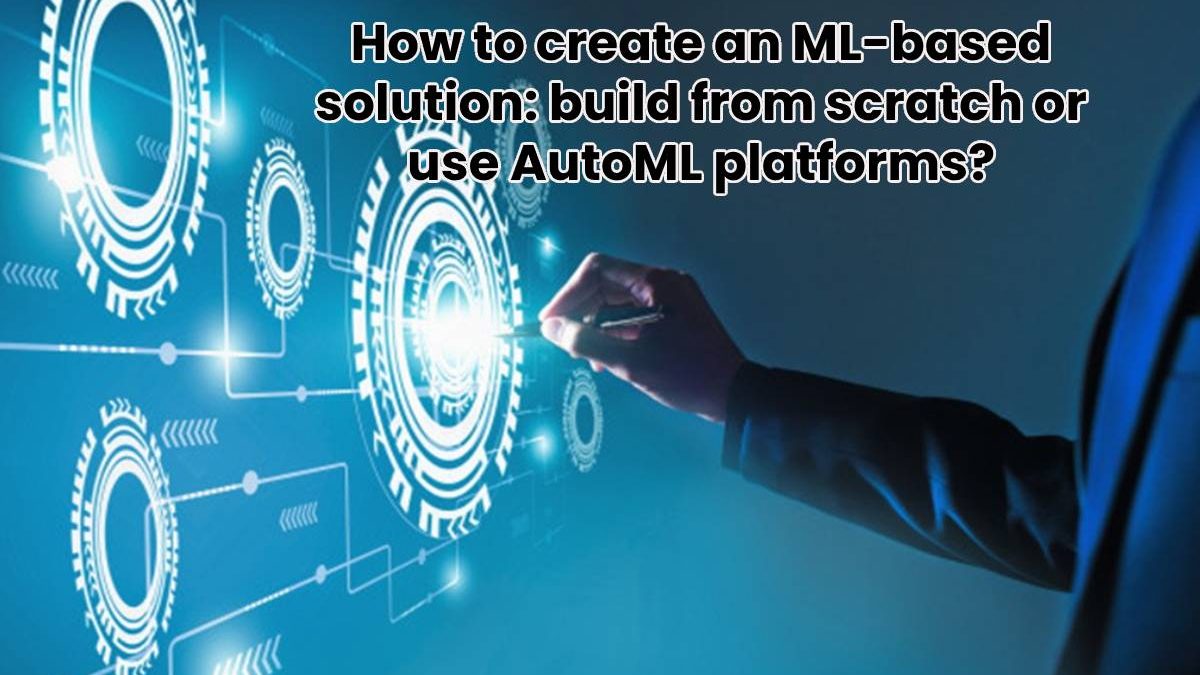Expert advice on how to choose between developing an ML solution from scratch and using an AutoML platform.
Machine learning (ML) is so versatile that it is one of the most promising technologies of our time. Currently, many leading companies such as Amazon, Google, Meta, Tesla, Snapchat and many others are effectively using these technologies in core processes such as customer support, marketing, product management, order management, manufacturing, etc., to boost their business productivity.
However, building ML-based applications continues to be challenging, not least because of the rapid development of technology.Development cost and time-to-market are among the major questions that shape the agenda in ML solutions implementation.
This is where AutoML vendors come into play, offering ready-to-use platforms and components that can help deliver the solutions faster and reduce development efforts. However, many companies still continue to create custom solutions, and there are solid reasons for that as well.
In this blog post, we will explain how to build a machine learning solution, as well as what aspects to consider when choosing a particular option.
Table of Contents
How to create an ML-based solution
Let’s take a closer look at the options available and sort out their pros and cons. At the root of things, most of the options boil down to two alternatives:
- build a solution from scratch (this includes creating your own data pipelines, building neural network architectures, developing APIs to serve the results, and configuring model monitoring )
- use a ready-to-use AutoML solution (pay to use existing services and write minimal code to preprocess and interact with the platform of choice (g Amazon AWS AI services, dotData, Splunk, and more)

Each of these options has its own pros and cons and it is crucial to weigh them carefully in order to make the right choice. Below are some recommendations to help you decide if you need to develop a solution from scratch or use any of the existing platforms.
Option 1: Build a custom ML solution
Unique business needs, e.g. line of business specifics, scale, data confidentiality, or security concerns are the major signs that you may need a custom solution. This will help you safeguard that the solution fits your needs perfectly because it is built in full accordance with your specific business requirements. Moreover, you will be able to handle unique scenarios or specific business domain data, customize results and adapt it to current input data and business constraints. You will also fully own the IPR, avoid 3-rd party vendor dependency, and the need to share your data with an external vendor.
However, it can take many months or even years to build the AI solution from scratch, so the time-to-market will most likely be quite long. And the programming skills required to create AI software should be quite high. Therefore the more complex your ML solution is, the higher initial investment will be required. So, it often makes sense to focus your team more on the business-critical tasks rather than reinventing the wheel by developing an ML solution already available as a service on some platforms.
Option 2: Use AutoML platform
The second option is to use an AutoML platform (e.g. H2, DataRobot, Google Cloud AutoML, etc.). These platforms allow organizations to build and serve ML models much faster by automating some of the time-consuming steps in an ML pipeline. This is a great opportunity for organizations that need to leverage AI in their internal business processes as you will spend much less time implementing an AI solution and gain a competitive advantage through a shorter time-to-market. Furthermore, these solutions have already been tested, adapted, and fixed according to the best practices and comply with diverse AI regulations.
Nevertheless, this approach also has several drawbacks. First of all, you will need to ensure that the data and processes currently used in your company are consistent with the platform’s expected inputs and behavior. Otherwise, the efforts spent on adjusting internal operations or customizing the platform can override all the advantages ofusing a ready-made platform. In addition, you will be dependent on a third-party vendor, so we recommend that you research carefully and entrust your solution to a credible and reputable vendor.
Build from scratch or use AutoML platforms: What to choose?
As you see, both options are feasible, but it is the business case that dictates which option to choose. It makes sense to thoroughly investigate it, have a closer look at the platforms available, and check how well those match your business case.
If those match well and there are no additional constraints on data security or IPR ownership – the AutoML platform is a great option. It also makes sense to consider not only the development cost but the total cost of ownership.

Custom application development would require more investments in development and there will be no additional license fees in the future, but you will still need to invest some effort into supporting the solution in the future and adjusting it to changing business needs. Ready-made platform use will reduce initial development investments, but entail additional license and support fees over time.
Summary
We briefly touched on the points to understand how to create a ML-based solution. We hope that our recommendations will give you the baseline for choosing the option that is right for your business needs. However, this area of knowledge is extremely broad, and it is simply not possible to cover all the details in one article.
Therefore, if you need additional support in choosing the most suitable platforms or developing a customized solution, it is best to turn to IT professionals with extensive experience in ML development. An IT consulting company can find the most efficient, cost-effective and customer-focused solution for you.

